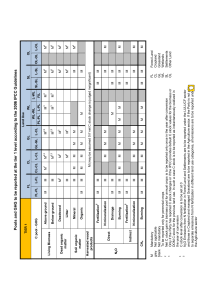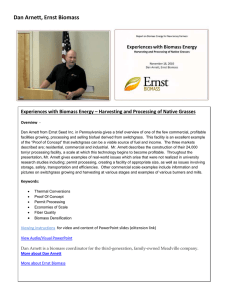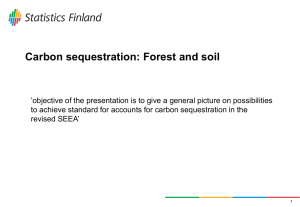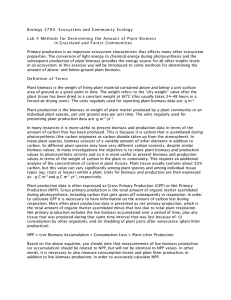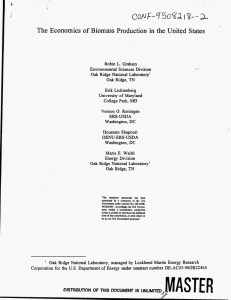An Optimization Approach and Analyses to Biomass
advertisement
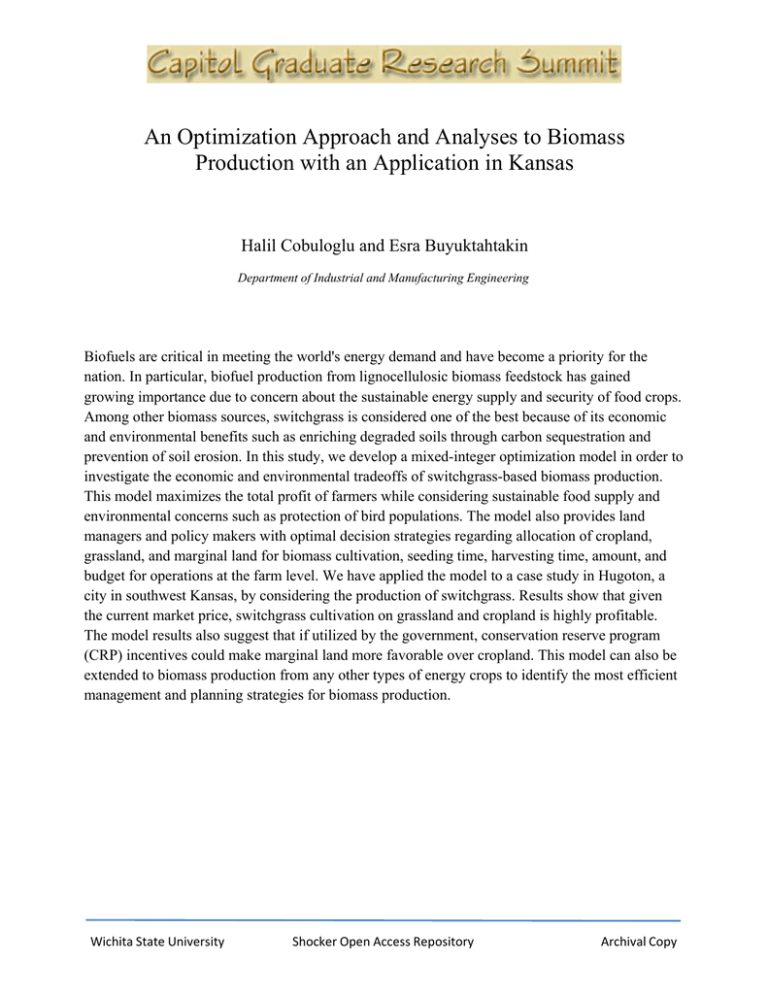
An Optimization Approach and Analyses to Biomass Production with an Application in Kansas Halil Cobuloglu and Esra Buyuktahtakin Department of Industrial and Manufacturing Engineering Biofuels are critical in meeting the world's energy demand and have become a priority for the nation. In particular, biofuel production from lignocellulosic biomass feedstock has gained growing importance due to concern about the sustainable energy supply and security of food crops. Among other biomass sources, switchgrass is considered one of the best because of its economic and environmental benefits such as enriching degraded soils through carbon sequestration and prevention of soil erosion. In this study, we develop a mixed-integer optimization model in order to investigate the economic and environmental tradeoffs of switchgrass-based biomass production. This model maximizes the total profit of farmers while considering sustainable food supply and environmental concerns such as protection of bird populations. The model also provides land managers and policy makers with optimal decision strategies regarding allocation of cropland, grassland, and marginal land for biomass cultivation, seeding time, harvesting time, amount, and budget for operations at the farm level. We have applied the model to a case study in Hugoton, a city in southwest Kansas, by considering the production of switchgrass. Results show that given the current market price, switchgrass cultivation on grassland and cropland is highly profitable. The model results also suggest that if utilized by the government, conservation reserve program (CRP) incentives could make marginal land more favorable over cropland. This model can also be extended to biomass production from any other types of energy crops to identify the most efficient management and planning strategies for biomass production. Wichita State University Shocker Open Access Repository Archival Copy




